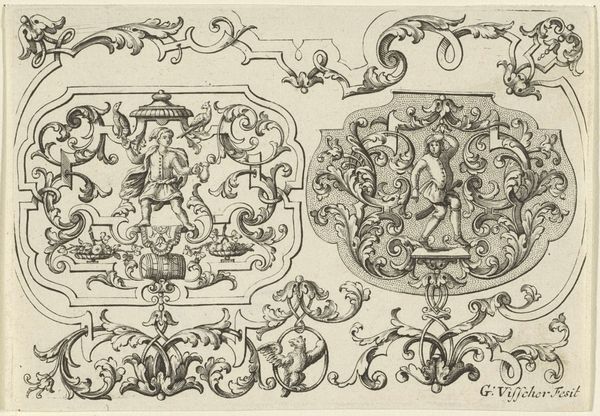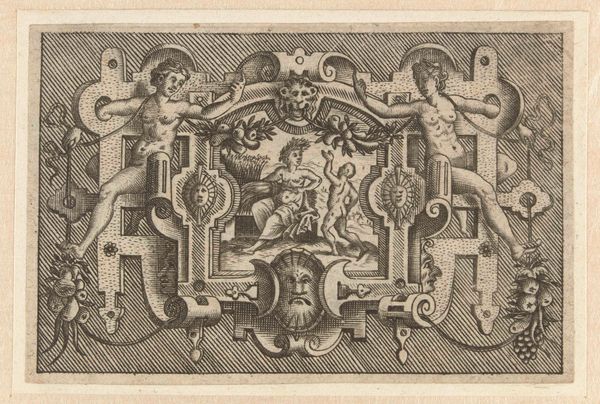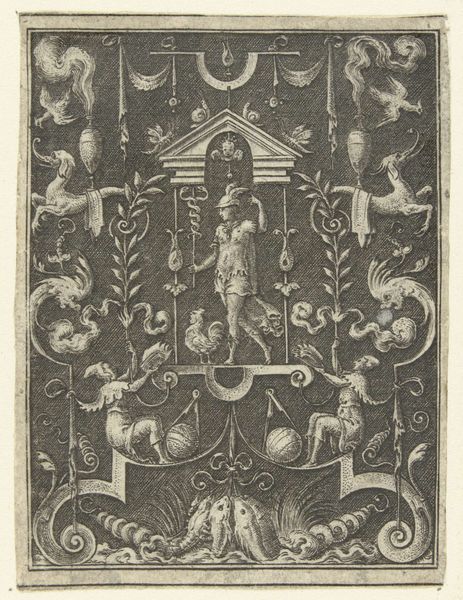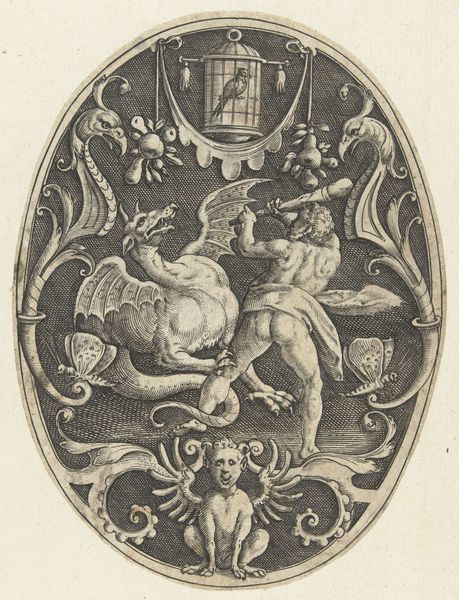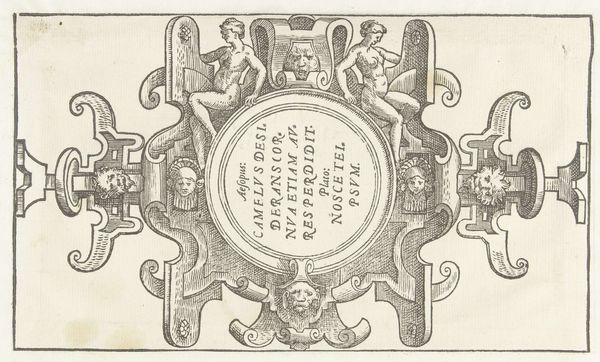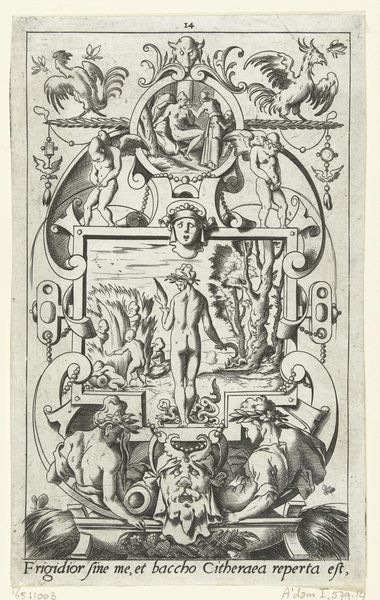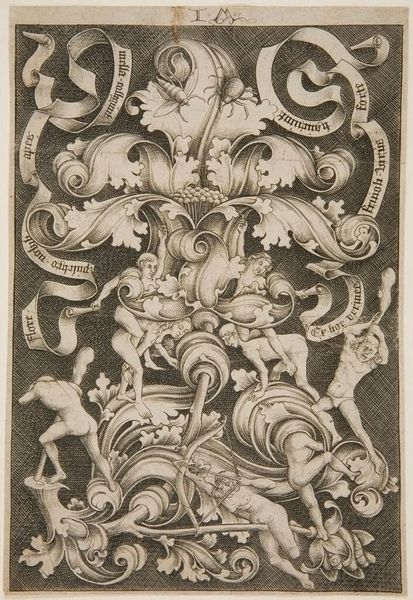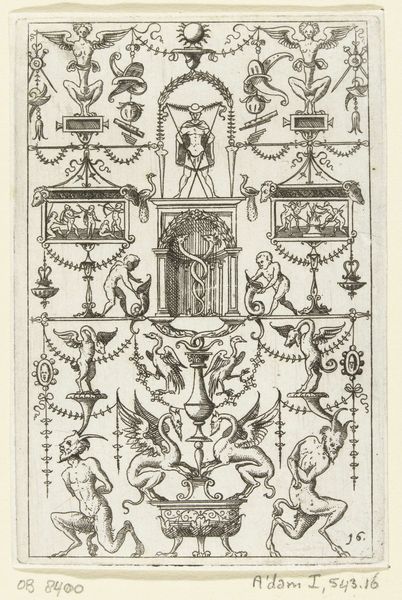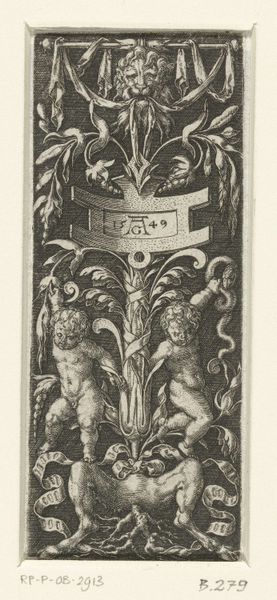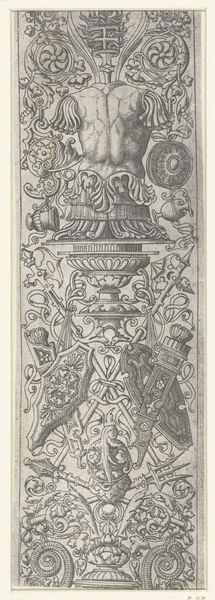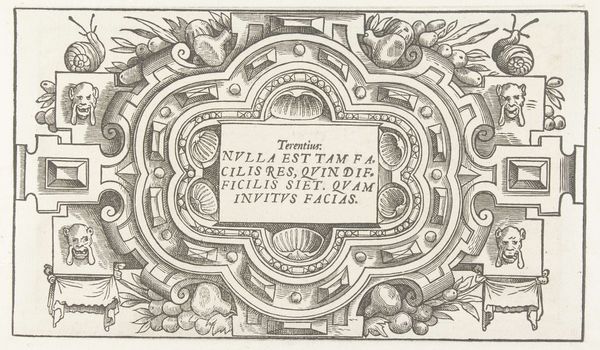
drawing, print, ink, engraving
#
drawing
#
allegory
#
pen drawing
# print
#
pen illustration
#
mannerism
#
figuration
#
ink line art
#
11_renaissance
#
ink
#
pen-ink sketch
#
pen work
#
engraving
Dimensions: height 141 mm, width 239 mm
Copyright: Rijks Museum: Open Domain
Curator: What a striking composition. At the Rijksmuseum, we're fortunate to have this intriguing print dating back to 1556. It's titled "Ruitvormige cartouche met een citaat van Bias"—or, a Diamond-shaped cartouche with a quote by Bias. Created by an anonymous artist using ink, it exemplifies the Mannerist style. Editor: My first impression? It feels intensely self-contained, like a little world held together by symbolism. The balance is impeccable, yet there's an almost unsettling quality in the way those figures are arranged around the central diamond. Curator: Absolutely. Let’s delve into that. Bias, one of the Seven Sages of Greece, was known for his maxim: "Most men are bad." Considering the era and Mannerism’s penchant for allegory, we should see this piece within the context of moral philosophy and early modern European anxieties about human nature. The classical philosophers of antiquity would have definitely provided scaffolding for self reflection at the time. Editor: The positioning of those figures certainly speaks to the era’s understanding of symbolism. We have what seem to be mother-child pairings contrasted with figures that are perched higher, further away. Birds, grotesque faces... It all hints at some very particular reading, like figures of innocence being observed by reason or intellect. I'm interested in the relationship here between familial care on one hand and what seem to be expressions of judgement on the other. Curator: I completely agree. These figures aren't merely decorative; they're crucial to understanding the engraving's message. Given that early modern period's gendered roles and the historical power structures present in the Renaissance family structure, I can’t help but ask how these notions of care, family and morality intersect in the artwork’s construction. It gives me a great interest to investigate that family structure and morality at the time. Editor: The almost fantastical creatures that act as supports certainly complicate a simple reading. The artist seems to be drawing from bestiaries and other systems of visual encoding to express very precise ideas about human nature and society. The whole composition feels as if the artist created an emblem through which they tried to express complex, and difficult, messages that can only come alive once you dissect the visual symbolism used. Curator: Yes. And it is our duty today to keep questioning and examining such embedded messages. This anonymous piece offers a microcosm of the sixteenth-century world: its anxieties, its philosophies, and its visual language. Editor: A little diamond-shaped world holding within it many larger concerns.
Comments
No comments
Be the first to comment and join the conversation on the ultimate creative platform.
